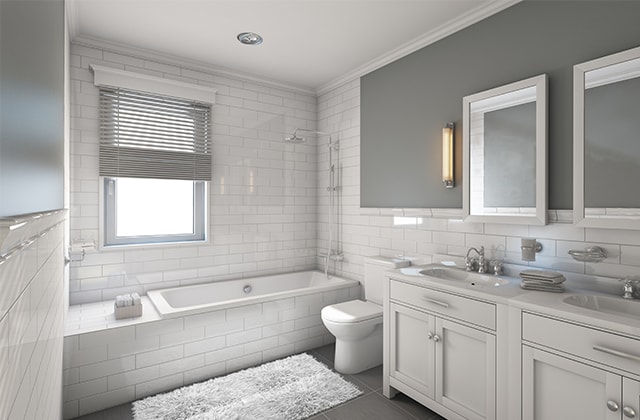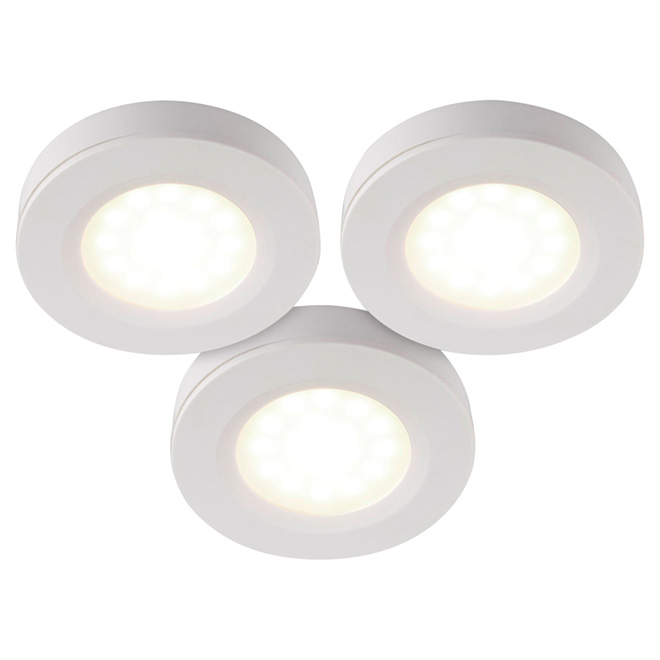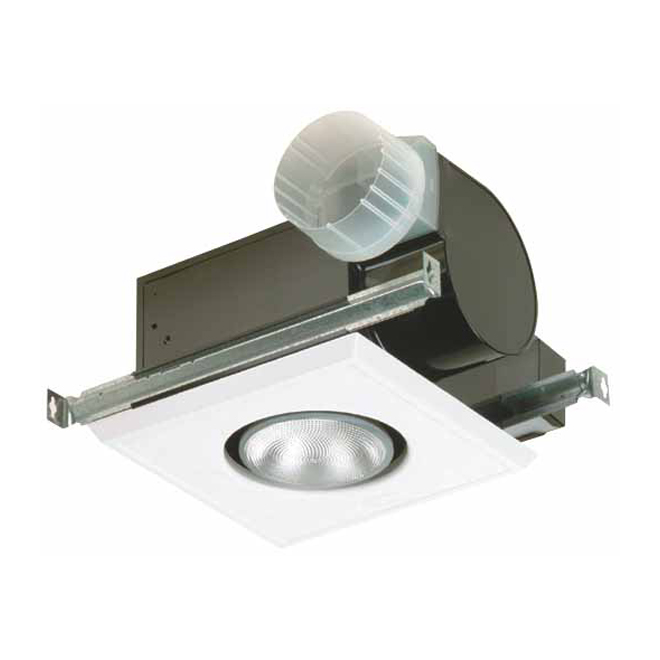Bathroom lighting plan
- How big is your bathroom?
- Who uses the bathroom?
- Which areas require lighting?
- What lighting effect do you want to achieve?
Veuillez vous connecter à votre compte afin de profiter de vos rabais en ligne.
Se connecterPlease sign in to your account to take advantage of your online discounts.
Sign inFunctional and decorative, bathroom lighting can also create an ambience. Adequate lighting is essential for daily grooming, makeup, and shaving, but your lighting choices will lend personality and interest to the decor as well.
Whether general or task lighting, each area must be adequately illuminated and comply with safety regulations. Learn how to carefully plan your bathroom lighting according to the range of lights available. Find out about the different bulbs, their output, and their colours, so that you are happy with your bathroom’s functionality and look.
Follow the guide to help you plan your bathroom lighting.

Functional and decorative, light fixtures add character to a room. Choose the one most suited to your needs.

Suspended by a cord, chain or cable.
Add personality to the decor.
Used for ambient lighting in rooms with high ceilings where they are best mounted in a central position.
Can also provide task lighting; for example, on either side of a mirror. In this case, they are best mounted at face height. They can be mounted at a different height if the mirror is not used for makeup.
The lower a pendant is placed, the more the beam is concentrated.

As the name implies, these fixtures are mounted on the wall. The heads can be fixed or adjustable.
Ideally used as complementary lighting.
Perfect for flanking a face mirror, in which case, they are mounted 60" from the floor.
Can also add an artistic touch by creating a special ambience.

Come in several models, such as recessed lights, fluorescent strips, and LED bulbs.
Highly popular, under-cabinet lighting modernizes the look of the bathroom.
Useful for brightening dark areas near the floor when installed in the toe spaces beneath low cabinets, or when placed near vanities or under wall cabinets.

Practical in small bathrooms, the lights form part of the bathroom fan.
Used for general lighting purposes.
Complements mirror light fixtures.

Suits all bathroom styles.
Adjustable spotlights enable the beams to be directed wherever light is required.
There are three categories of recessed lighting
Sleekly embedded in the ceiling, they blend into the background and furnish general overhead lighting.
Ideal for rooms with low ceilings.
Can be used to illuminate a mirror area.
May be mounted above or even in the shower enclosure, providing safety regulations are respected.

As the name suggests, with track lighting, the lights are attached to a track. The individual heads can be fixed or can swivel.
Tracks fitted with mobile spotlights create an intimate atmosphere by directing light onto decorative objects or projecting direct beams of light.
Track lighting is also valuable for providing ambient lighting in a room with a high ceiling (8 feet or more).
Ideal above a large mirror.

Often fitted into the fan, heat lamps are great when you step out of the bath.
Provide accessory lighting.

Mounted close to the ceiling.
Several other lighting options, such as wall sconces, can be combined with ceiling fixtures.
Radiate uniform ambient light.

Semi-flushmounts are mounted close to the ceiling. They can be round or square or even have several lamps.
Several other lighting options, such as wall sconces, can be combined with ceiling fixtures.
Used for general lighting.
Choosing the right lightbulb is just as important as choosing the right fixture.
The Kelvin (K) is the unit used for measuring the temperature of a light source. Incandescent bulbs emit a warm light which varies between 2700 and 3000K. The greater the Kelvin, the cooler the light and, consequently, the more bluish the light appears. For lighting which resembles natural daylight, choose a bulb of greater than 4,000K.
The colour rendering index, or CRI, is the measure of a light source’s ability to render the colour of the objects it illuminates. An index of about 100 CRI resembles natural daylight and is perfectly suited for furniture, the skin and clothes.
Adapt the layout of the bathroom for children or for persons with reduced mobility, making everything in the bathroom accessible.
The wet environment of the bathroom dictates where different light fixtures can be installed. A light fixture should not be fitted near the shower simply because it looks good; special safety regulations protect the bathroom’s users and guard against electrical shocks.
Each light has a protection rating (IP code) consisting of two numbers. The first number indicates the level of protection provided against solid bodies and the second, the level of protection against water. Lights above the shower or bath must have a minimum IP24 code. General bathroom lighting rated IP21 or higher provides sufficient protection.

